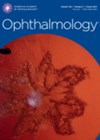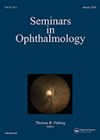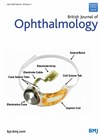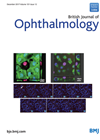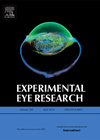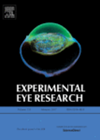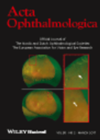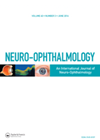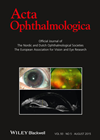
Journal Reviews
Effect of blue-light filtering intraocular lenses on age-related macular degeneration
This is a retrospective cohort study evaluating whether blue-light filtering (BLF) intraocular lenses (IOL) offer prophylaxis for neovascular age-related macular degeneration (nAMD). The study included 11,397 eyes of 11,397 patients with a mean age of 75.4 ±8.3 years that underwent...
Restoration of colour perception in patients with retinitis pigmentosa
This is a case series testing the feasibility of using bioelectronic retinal prostheses to partially restore colour perception in seven patients with advanced retinitis pigmentosa. Bioelectronic retinal prostheses are able to bypass degenerated photoreceptors to directly stimulate the inner retinal...
Intravitreal Ziv-Aflibercept: safety analysis
Ziv-Aflibercept (Zaltrap; Sanofi-Aventis U.S LLS, Bridgewater, NJ) was originally introduced as an intravenous formulation for metastatic colorectal cancer. The adoption of Ziv-Aflibercept in ophthalmic practice was similar to bevacizumab, and reports have previously examined one to two year visual outcomes...
Anatomical and functional outcomes following switching from aflibercept to ranibizumab in NARMD
This is a six-month, prospective, single-arm study in the UK and Germany. A total of 100 patients were enrolled (one in the primary failure group, 99 in the suboptimal treatment response group), treated three-monthly intravitreal ranibizumab injections (0.5mg), and then...
RPE atrophy onset in treated nAMD
In this study the authors aim to evaluate the role of various factors for the development of retinal pigment epithelium (RPE) atrophy over a period of five years in patients with nAMD. Fifty-two newly diagnosed nAMD patients with complete absence...
Using a pupillometer to confirm presence of RAPD in post stroke homonymous hemianopia
It has been reported that relative afferent pupillary defects (RAPDs) may be present in patients with occipital lobe lesions. However, a small contralateral RAPD due to a difference in the crossed and uncrossed fibres can be difficult to detect using...
PRN Ranibizumab verses continuous aflibercept in UK clinical practice
This was a multicentre (21 UK hospitals), national EMR study on treatment naïve nAMD eyes, undergoing predominantly as needed (PRN) Ranibizumab or continuous (fixed or treat and extend - (F/TE)) Aflibercept (Af). The primary outcome was change in vision at...
CD40L activation of human RPE cells
Age-related macular degeneration (AMD) is the leading cause of reduced visual acuity in the elderly worldwide. The risk factors involved in AMD include smoking and diet, while genetics have been shown to have a significant role. Recently a link between...
Importing iron to the retina
In the retina, iron is particularly critical for the visual phototransduction cascade. In the retinal pigment epithelium (RPE), RPE65 activity leads to 11-cis-retinaldehyde, the photosensitive component of rhodopsin production and iron containing enzymes are necessary for disc replacement in photoreceptor...
How many injections in nAMD: ranibizumab vs. aflibercept
Intravitreal anti-VEGF injections make up a large proportion of the workload in ophthalmology clinics. Since the introduction of aflibercept with eight weekly injections there has been an option to use a treatment which may require less treatment, with potential cost...
Systematic review on vergence neural pathways
A full systematic review of the literature was carried out by the authors, to identify literature available on vergence neural pathways and associated disorders. The review included articles related to vergence neural pathways, along with articles that discussed the anatomy,...
The rarebit vision test for macular conditions
Rarebit testing is used to measure low degrees of neuro-visual damage and is available for free on the internet. It consists of a fixed bright light dot presented on a black background. During testing it is presented briefly at different...

